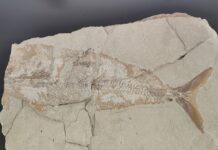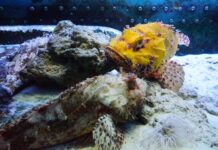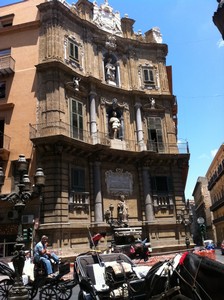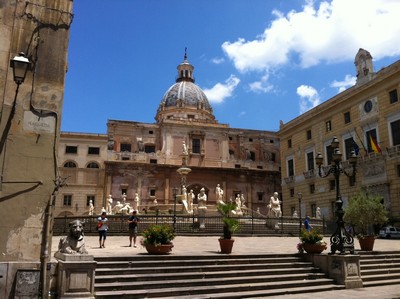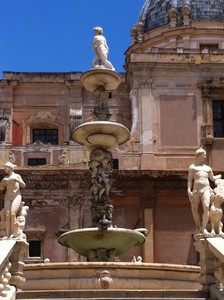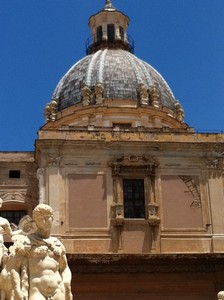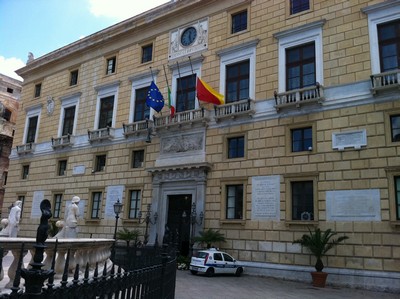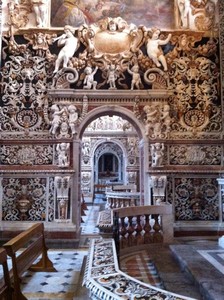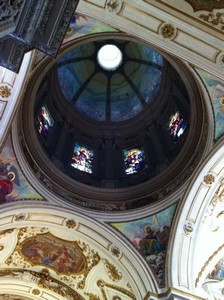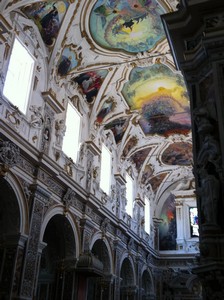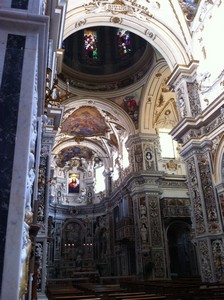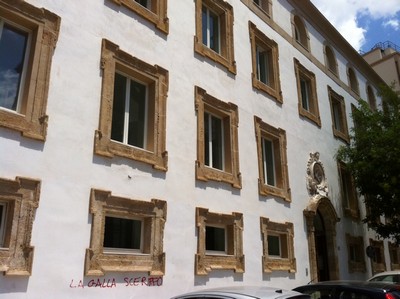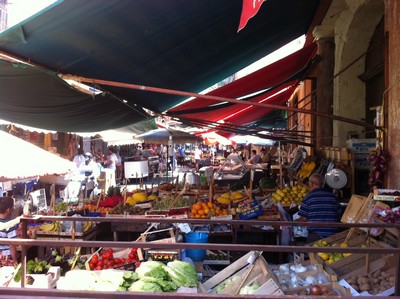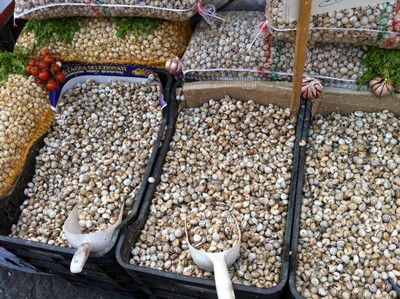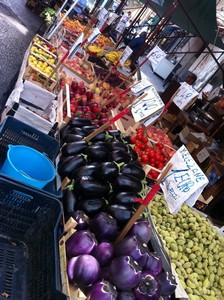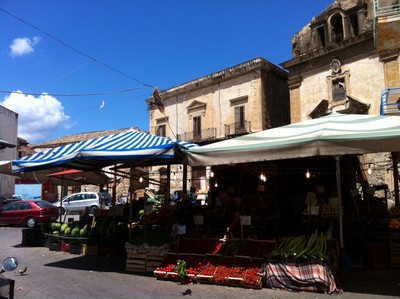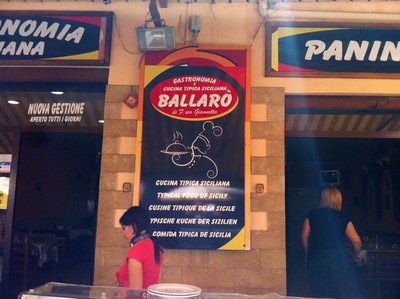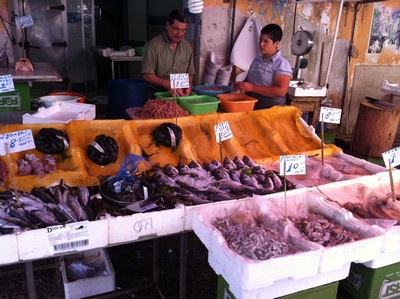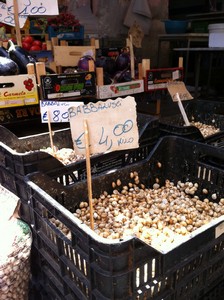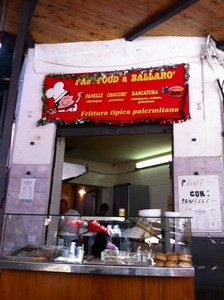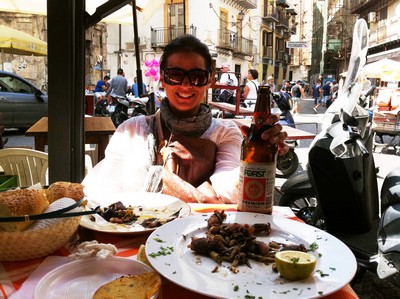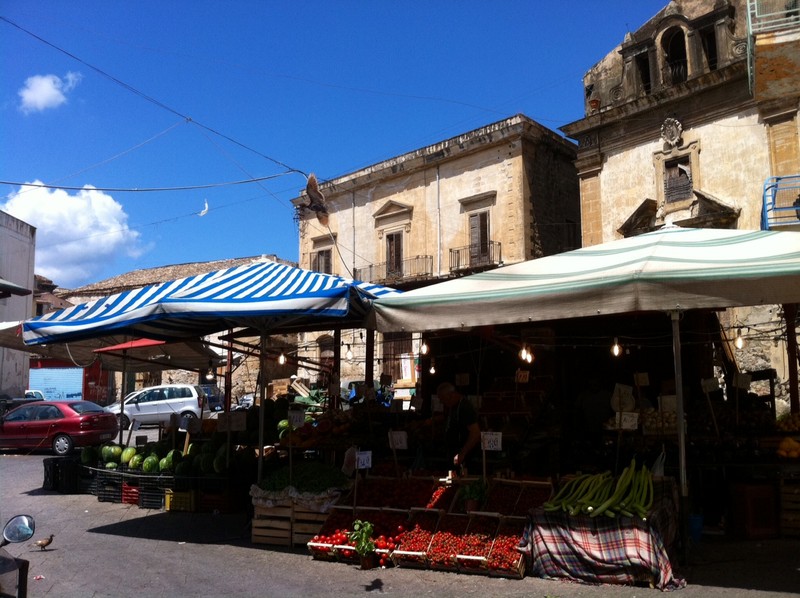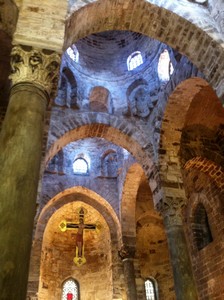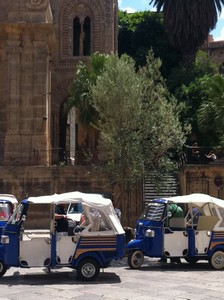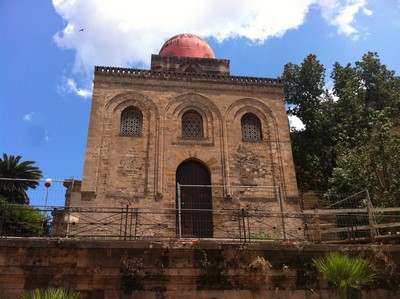Our visit to Palermo restarts from Piazza Vigliena or I Quattro Canti. The square is octagonal and takes its name from the four façades of the buildings surrounding the space of the crossing, occupied on the sides by placid horses attached to coaches ready to take the tourists around the city. The façades have four levels of decoration: on the first, the fountains representing the four rivers of the ancient city (Oreto; Kemonia, Pannaria and Papireto); then allegories of the four seasons, the statues of kings and then the four saints of Palermo, Agata, Ninfa, Oliva and Cristina, the patronesses of the city before the arrival of Santa Rosalia in 1624.
If you go around the corner you will find yourself in Piazza Pretoria which is also called Piazza della Vergogna, because of the nudity of the statues of the fountain in white Carrara marble sculpted by Francesco Camilliani. The impression is that the place is not wide enough to accommodate the monumental fountain enclosed by a wrought iron gate. In the background, in addition to Palazzo Pretorio, that gives the square its name and today house of the town hall, stands the Church of Santa Caterina. The church has a single nave but it is richly decorated with variegated marble, stuccos and frescoes, quite redundant in the style of the Counter-Reformation, to put the visitor in a haze. Which increases once you enter the Chiesa del Gesù also called Casa Professa. This church was built in honor of the Jesuits at the end of 1500 and is simple in the exterior, but opulent in the interior. You don’t know where to look in this explosion of sculptures, stuccos, paintings, carvings and rich altars.
After so much food for the eyes and the mind, the stomach starts to claim and it’s time for a gourmand stop in Ballarò, where it seems to be in a North African souk, among seasonal vegetables of all kinds and baskets overflowing with “babbaluci”, as the slugs are called here.
In the square we stop at Fastfood Ballarò a friggitoria, where they serve fried food and on the table appear, disappearing almost immediately into our hungry mouths, delicious rolls of swordfish, a tasty caponata, fragrant fish- fried called “maccaroncelli” and finally panelle, chickpea flour pancakes and cazzilli, fried potatoes balls. “Comanda” that a jovial man in undershirt, took on a squared block and sent it directly to the kitchen at the back. The coffee is served at the table by a boy whom Umberto, this is the name of the man in an undershirt, ordered in dialect to go and get it at the nearest coffee place.
We have a second coffee in Piazza Bellini, overlooked by the entrance of the Chiesa di Santa Caterina, the Church of Santa Maria dell’ Ammiraglio called La Martorana and San Cataldo. The first is a splendid example of historical and stylistic influences. Entering it, you are stunned by the glimmering gold of the magnificent mosaics with Byzantine iconography. The church is also known as Martorana because, built in 1143, it was annexed as a chapel at the convent of the same name in 1194. Unmistakable the square topped by three red domes that characterizes the Norman church of San Cataldo, where inside the complex decoration of the floor contrasts with the severity of the stone of the walls.
BLOC NOTES
Fastfood A Ballarò
Piazza Ballarò
Info: +39 333 8270579
Ristorante Pizzeria Bar Bellini
Piazza Bellini 6
Info: +39 091 6165691
(Traduzione di Monia Saponaro)



